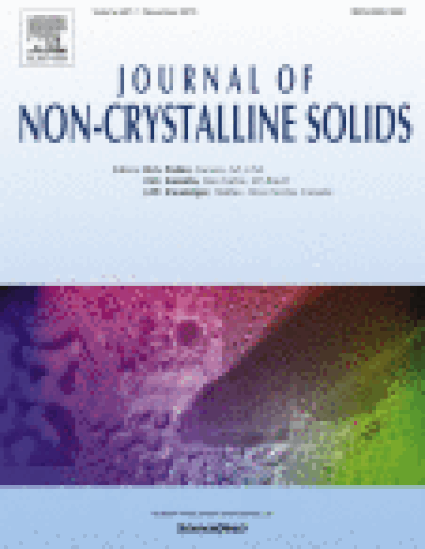
Article
Sol–Gel Synthesis and Characterization of xCuO–(1 − x)Bi2O3 (0.15 ≤ x ≤ 0.55) Glasses by Magnetic and Spectral Studies
Journal of Non-Crystalline Solids
Document Type
Article
Publication Date
11-1-2015
Disciplines
Citation Information
Das, B.B.; Srinivassan, A.; Yogapriya, M.; Kongara, M.R.; and Punnoose, A. (2015). Sol–Gel Synthesis and Characterization of xCuO–(1 − x)Bi2O3 (0.15 ≤ x ≤ 0.55) Glasses by Magnetic and Spectral Studies. Journal of Non-Crystalline Solids, 427, 146-151. http://dx.doi.org/10.1016/j.jnoncrysol.2015.07.029

Binary glasses having compositions xCuO–(1 − x)Bi2O3 (0.15 ≤ x ≤ 0.55) (A1–A5: x:: 0.15, 0.25, 0.35, 0.45, 0.55) are prepared by sol–gel method. Glassy phase is ascertained by powder X-ray diffraction (XRD) studies. Glass transition temperatures, Tg, of the glasses are observed to be ~573 K. Magnetic studies on the glasses at 300 K in the range ±10 kG show weak ferromagnetic nature, and additionally the particular glass A3 (x = 0.35) at 5 and 300 K in the range 0–6500 Oe also indicates weak ferromagnetic nature. Observed electron paramagnetic resonance (EPR) lineshapes of the glasses in the range 5–300 K are isotropic in nature, and the corresponding giso-values ~2.1 ± 0.001 are due to similar site symmetries around the Cu2+(3d9 ) ions. Thermally assisted hopping of Cu2+(3d9 ) small polaron modulates the EPR lineshapes which results in motionally narrowed lineshapes. Activation energy of hopping, Ea, of the small polaron, calculated from derivative EPR peak-to-peak linewidths of the glasses are observed to be ~1 × 10−4 eV (~1011 Hz). Broad optical absorption bands ~400 nm and ~660–735 nm in the glasses are attributed to 2B1g → 2Eg and 2B1g → 2B2g transitions from the ground state in Cu2+(3d9) ions in tetragonally distorted octahedral environment.
in Cu2+(3d9) ions in tetragonally distorted octahedral environment.